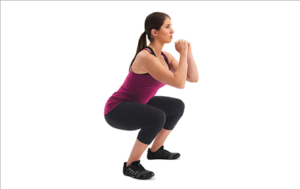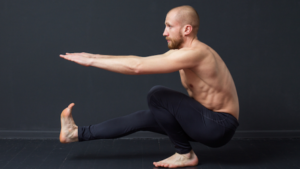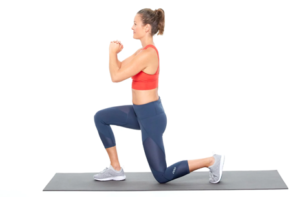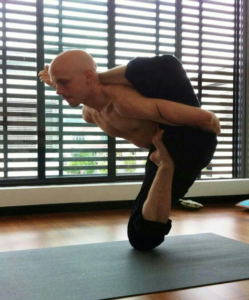How flexible do you need to be to run efficiently? Is being more flexible better for injury prevention, or worse? Should I be able to touch my toes? Should I be bending myself up at Yoga classes like a pretzel? Should I even stretch at all?!?
We are not likely to put an end to the stretching debate any time soon, but after evaluating and treating thousands of runners, from Olympic gold medalists to athletes with Down syndrome over the last 15 years, we can tell you that the answer to whether or not YOU should stretch is a definitive……maybe.
While there is no hard and fast absolute when it comes to flexibility, there are some big-picture concepts that are important to understand. At RunLab, we have seen hypermobile (excessively flexible) runners that are able to run injury-free, and we have also seen runners who are so stiff they can barely perform basic motor skills with true proficiency run injury free (ever met someone who can’t touch their mid shins? Yeah, that stiff). So, how flexible do you need to be to run efficiently? It’s a broad spectrum. Every physiological attribute exists on a spectrum, and university-based researchers have established what are considered “normal limits”. Because of this spectrum, this definition of “normal” is the middle 80%.
First and foremost, it is important to define our terms. Flexibility and mobility are different but related. Flexibility is a component of mobility but the two terms are not interchangeable. Flexibility is the ability of a muscle to change its length passively. Mobility is the ability to move freely without restriction.
Running is a dynamic motion. In dynamic motion, a muscle shortens and lengthens as it contracts. This happens over and over again during a repetitive motion activity like running. When considering the stability aspect involved with running, it becomes apparent that flexibility is not the most important factor. Rather, mobility is the attribute runners should be more concerned with. It is important that a joint can move, unrestricted, through normal range-of-motion, but and increase in flexibility beyond what is needed to achieve that range-of-motion at the joint level is not improving the stability of the joint and could actually be creating a less stable environment for loading and can create a power leakage in the movement pattern.
In runners we typically look at four major areas to assess mobility. The ankles, knees, hips, and spine. Having proper mobility in each of these areas is important in order to properly accept load from the ground as the body comes out of flight phase and begins to absorb shock from the foot, and then ultimately up the kinetic chain. Inefficiency in shock absorption means a higher probability of injury as non-primary movers may then be recruited to absorb load, stabilize joints, and produce propulsion because the primary movers are not able to adequately perform their role.
Three important functional movements that help build both mobility and stability for running are the deep-squat, the pistol squat, and the inline lunge. It is important to perform all of these movements with proper form and to really pay attention to your body as you go slowly through the entire motion.

Moving slowly and deliberately will help you avoid compensatory movements that tend to easily sneak in to these movement pattern. The body tends to want to offload stress from weak or immobile areas during loading and it is easy to continue to strengthen muscles that are already strong, further increasing the disparity between strong and weak muscle groups.

The ability to master these movements at a slow speed without added load is the first step to improving both mobility and stability around joints. Adding complexity (speed, reps, weight) to the fundamental movement patterns will lower the probability of injury while running at greater speeds or distance, but should only be done once the basic building blocks are in place.

Test the fundamental movements slowly on yourself. If you feel restrictions or imbalances before reaching end-range in a controlled way, perform a few foam rolling drills and then retest. Perform these types of patterns regularly as both a warm up and cool down during running workouts. After a few weeks you will see improved mobility and stability around your hips, knees, and ankles, which over time will translate to more efficient motor patterns and increased running efficiency.
Thank you for taking the time to read our RunLab™ Blog! We hope that you use this information to optimize your running performance and decrease propensity for injury so you can run happy and healthy into your golden years.
For more information about the RunLab team and to get your running stride analyzed by our team of clinical gait experts please visit WWW.RUNLABAUSTIN.COM
Outside of the Austin area? You can still have your running stride analyzed by our team. Visit WWW.RUNLAB.US for a list of our RunLab Gait Imaging Centers, or choose our self-film option from anywhere in the United States, and you’ll get immediate access to our team.
RunLab™. Helping runners help themselves.
ABOUT LORIN WILSON
Lucky enough to be a part of a great running program in high school, Lorin not only went on to win the 2007 Texas 4a State Championship in the mile but also went on to earn a track scholarship to the University of Texas at Austin. Lorin graduated from the The University of Texas at Austin with a major in Exercise Science and a minor in business. While still attending UT, he began coaching distance running at St. Stephen’s Episcopal school where he would coach student-athletes to break school records in the 400 meter, 800 meter, 1600 meter, 3200 meter, 5000 meter, 4×400 meters, and 4×800 meters. After graduating from UT and during his aforementioned tenure at St. Stephen’s, Lorin also worked for the local Austin non-profit Power For Parkinson’s as a fitness instructor, which provides free fitness programs for individuals with Parkinson’s disease. No longer a trainer at Power For Parkinson’s, Lorin does fundraising campaigns for Power For Parkinson’s. During this period he also started BlueSky Running LLC, which provided on-site Yoga programs for employees of the Austin Independent School District (teachers, administration, bus drivers etc).
Lorin has the following physical training certifications: National Academy of Sports Medicine (NASM) Certified Personal Trainer, Performance Enhancement Specialist (NASM), Corrective Exercise Specialist (NASM), Senior (elderly individuals) Fitness Specialist (NASM), Fitness Nutrition Specialist (NASM), RunLab Clinical Gait Specialist, USA Track & Field Level 1 Coach, and a USA Yoga Alliance 200 Hour Certified Yoga Instructor certification earned while studying in Rishikesh, India. Lorin is a MBA Graduate with an emphasis in Accounting from Texas State University. He was also the President of the Texas State MBA Student Association and a Future Texas Business Hall of Fame Scholarship Recipient.
Lorin has a marathon best of 2:37:05 (5:59 per mile pace) run at the 2011 Los Angeles Marathon. He ran his first 100 miler in 17 hours 30 minutes (10:15 per mile pace) in Flagstaff, Arizona in September 2018. He ran the 2019 Boston Marathon in 2:37:59. He also has three top 10 finishes (5th, 7th, and 10th) in the Capital 10,000, the largest 10k in Texas, with the latest two being 2016 and 2017. Lorin looks forward to working towards his goal of making high-quality fitness accessible to everyone while he continues to train for 100 mile races.

LEARN MORE:
RunLab™ Podcast RUN.
RunLab™ YouTube channel

